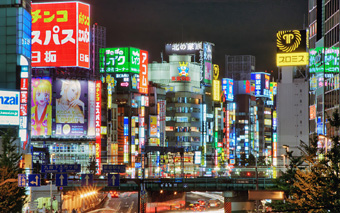
Image courtesy of Airlines-Airports.com
Tokyo Tops List of Biggest Cities
| published February 25, 2017 |
By Thursday Review staff writers
Though experts continue to disagree on how to precisely measure the population of cities, with statistical squabbles over the meaning of metropolitan areas versus strict city limit boundaries, one thing the population analysts agree upon: since about 2007, the clear majority of the Earth’s humans live in cities or large metro areas.
The shift took place ten year ago and has remained solid; in fact, over that decade cities have only gotten larger with each passing month, while rural and non-urban areas have continued to decline. If the trend remains solid, by 2030 some 60% of the world’s people will live in large cities.
According to the United Nations, the World Health Organization, and the U.S. Centers for Disease Control, Tokyo is by far the largest urban area, with a staggering 38.14 million people living in one contiguous metropolitan area.
The fuzziness however remains a problem for organizations and government agencies that track population. The generally preferred definitions of urban areas as being interconnected and linked by business, employment, finance and spending habits still prevail among many agencies of the U.S. government. Large American examples would include Atlanta or Los Angeles: in each case a strict reading of population produces relatively small numbers, but by including the complex patchwork of communities and towns and municipal boundaries within the larger urban area, one quickly sees how large these metro areas can be. LA includes scores of communities within its metro footprint.
New York City, for example, is officially home to 8.5 million people, if one uses strictly the limits of its jurisdictional reach. But the bigger metro area is home to more than 20 million, a substantial difference when one includes the densely packed areas contiguous to New York’s strict boundaries. The United Nations prefers what it calls the urban agglomeration to measure true population, which is to say all areas deeply interconnected by streets, transportation, commerce and human activity.
Coming in behind Tokyo in total population: Delhi, India in second place with 26.4 million people; Shanghai, China with 24.41 million; Mumbai, India, with 21.37 million; and Sao Paulo, Brazil with 21.29 million citizens.
Related Thursday Review articles:
Scared as Kuala Lumpur: Or, Tourism in the Age of Terror; Michael Bush; Thursday Review; March 13, 2016.
Beijing to Host Winter Olympics 2022 ; Thursday Review editors; Thursday Review; July 31, 2015.
